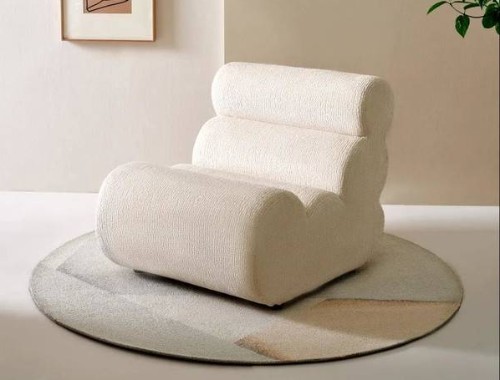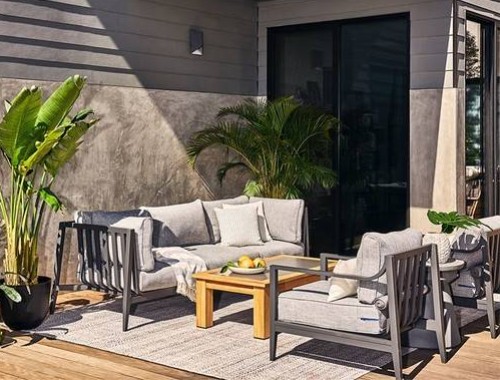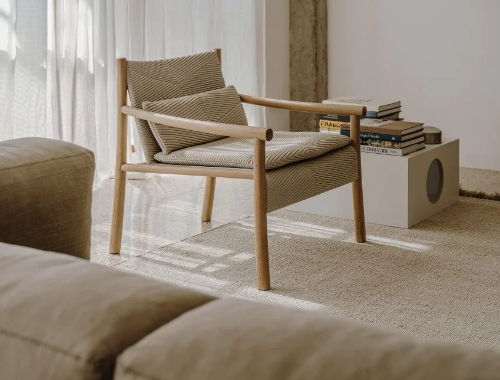Furniture market topped outlook
Area furniture manufacturers are encouraged by higher attendance, and in some case more orders, at last week’s International Home Furnishings Market in High Point, N.C.
Area furniture manufacturers are encouraged by higher attendance, and in some case more orders, at last week’s International Home Furnishings Market in High Point, N.C.
But they remain cautious, and no one is forecasting a turnaround in the economy soon.
The market — the world’s largest home furnishings industry trade show — ran from Oct. 22 to Oct. 27.
Bassett Furniture Industries had a 20 percent increase in attendance compared to last October’s market, and wrote “significantly more orders,” said Robert H. “Rob” Spilman, president and chief executive officer.
Spilman said he did not have a percentage increase in orders, but he called it “very big.”
“We offered some incentives that were I’d say more aggressive than we have been in recent markets,” he said. “But even taking that out, personally I was surprised that we turned in that kind of performance,” and excited by it.
“In the context of the world today — I just read that consumer confidence was the lowest in 30 months — it’s hard to know” what to expect, he added.
Rather than put all its lines on its showroom floor at this market, Spilman said Bassett only displayed what was new at the last market in April and at this market. “That seems to be working for us,” he said.
Spilman said he heard people in the showroom from different regions of the company say consumers are scared about the economy and the future.
So Bassett’s performance at the market may be more of a response to what it is doing as a company than an improving economy, he said.
“I heard someone say you’ve got a pretty spotty environment in the marketplace. You have some companies doing OK to well, and you have others that are not. I still think there is a winnowing out in the industry,” he said, calling furniture a “cottage industry.”
There are many people in the furniture industry, but some do not have the assets to weather the nearly five years of pressure that the industry has experienced, Spilman said.
“I think the more substantial players” with good balance sheets and assets “are beginning to win,” he added. “That’s my personal opinion.”
While the market was surprising, Spilman would not say he is optimistic. “We may have been so tempered by a tough business for so many years,” he said. “I’m not sure; it may take me a while to feel optimistic. But it was fun.”
Hooker
At Hooker Furniture Corp., “overall it was a solid market” with attendance up slightly over October 2010, said National Sales Manager Phil Garrett. “It was probably the best fall market in terms of attendance since 2007. It keeps trending up; obviously that is encouraging.”
Hooker President, CEO and Chairman Paul Toms said attendance was up 3 percent in uphosltery and 10 percent in the wood showrooms.
“People seemed to be receptive to our new products,” Toms said, “but it takes several months after the market to finalize the commitments made and get commitments turned into orders. Heading into late fall and winter, we feel pretty good.”
Garrett said orders from the market will be placed in the next 30 to 45 days, and he is confident the market will be deemed successful after that.
“Retailers are still operating fairly cautiously,” he said. “Orders will come. So many retailers are making decisions by committee” after shopping at the market, returning home and then making purchases.
Garrett said the mood at the market was upbeat because it energizes dealers who are focused on “doing the job at hand.”
“You do have a few pockets of success stories around the country, perhaps a retailer who is expanding,” Garrett said. But “for the most part, they are very cautious about their buying decisions.”
Toms agreed. But he said despite low consumer confidence, some people in the more affluent demographic Hooker serves “may be spending a little more freely than the less affluent.”
Also, he noted that furniture often is an event-driven purchase, such as when a young adult gets a first apartment, a baby is born, a couple moves or retires and so on. “Those things continue to happen,” despite the economy, he said.
“We’ve had a pretty good year. Demand is up in two of three” areas over last year, he said, adding that the leather business is “struggling more than wood or fabric. In two of the three we’ve seen demand significantly stronger than a year ago.
“We’re still doing better than a year ago,” Toms said. “We’re encouraged. A lot of things we’ve done internally have helped us grow and gain market share. In a difficult environment, there’s still opportunity for us.”
Stanley
Attendance was up slightly at Stanley Furniture’s showroom, according to President Glenn Prillaman, though he will not have final numbers until this week. But he said he pays more attention to the market’s orders, which he called “good.”
“It’s a very, very difficult retail climate right now. The orders we get for today obviously don’t affect our business until the middle to end of next year. Certainly we had a successful market as far as commitment from retailers,” he said.
Prillaman said he had no sense that the retail furniture business is improving. “Everybody’s had a difficult time since Labor Day, and it was not easy before that,” he said.
Stanley’s stock has been trading around $3 a share recently, with its 52-week range between $2.50 and $6.13, according to Yahoo! Finance. Prillaman said a company’s stock generally follows its earnings, and “we’re not profitable yet. Coming out of a restructuring, our people have done a wonderful job turning the company around. We’re on the path toward profitability but we have not become profitable as a company yet.”
That will require Stanley to post about $30 million in sales per quarter, and for the last three quarters it has had sales around $27 million, “give or take a million,” he said.
“We’re just a little below where we need to be to become profitable,” Prillaman said. “We have a lot of initiatives underway operationally” to achieve that.
He noted that improvements to the Stanley Furniture line, which now is made overseas and distributed from Martinsville, carried the company’s financial improvements earlier this year. The company has about 80 employees here, plus office staff, he said.
“Our Martinsville folks have a heck of a lot to be proud of toward contributing to the profitability of the company,” Prillaman said.
Now, he said, the Robbinsville, N.C., plant, where Stanley’s Young America line is produced, needs to do the same for the rest of the year.
That has taken longer because it involves modernizing a domestic facility, he said, adding that those efforts are underway and the company is “seeing great improvements there.”
Once the company becomes profitable, it will focus on increasing revenues, Prillaman said. “We have a plan, the right people and the resources” to do that, he added.
Bassett Mirror
Attendance was about the same as last October at the Bassett Mirror showroom, said Bill Frazier, vice president and national sales manager.
“Obviously we would like more,” he said, but traffic was steady from the Friday before the market opened until Wednesday, the day before it closed, he said.
“We wrote a lot of orders,” Frazier said, attributing that to a new format for its showroom which he said created excitement.
Instead of putting its new introductions in one area of the showroom, Bassett Mirror grouped them by style groups in presentations created by Tonya Davis, assistant vice president of visual presentations.
“That showed our dealers that you can buy more than one category in a style, and that helped us a lot, Frazier said.
He added that he was “pleasantly surprised at the mood” of retailers visiting the showroom, and said he is “pretty upbeat about the next six months due to the buying patterns of the dealers that came in.”
-

Quanyou teamed up with the fashion brand ANNAKIKI to launch a new joint product!
-

Outer, an outdoor furniture brand founded by Chinese, enters the Australian market
-

National Bureau of Statistics: The retail sales of furniture in the first three quarters reached 120.5 billion, an increase of 20.7%
-

Enveloping lounge chairs and lightweight office chairs from Arper feature

 沪公网安备31010402003309号
沪公网安备31010402003309号



